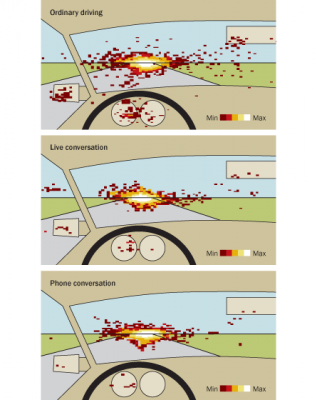Very good article today in Forbes by David DiSalvo featuring an interview with Dr. David Simons (author of the bestselling book "The Invisible Gorilla").

On the topic of distracted driving, Dr. Simons said:
- The more attention we devote to gadgets, the less we have available to spot unexpected dangers. In part, the danger comes from our lack of awareness of our own limits. When we’re distracted, we don’t notice that we’re distracted.
- What we can do is take steps to limit the consequences of those distractions when they matter most. Perhaps those problems can be addressed through technology (e.g., finding a way to prevent texting by a driver while still permitting it by passengers). But, doing so requires better recognition of the risk in the first place.



